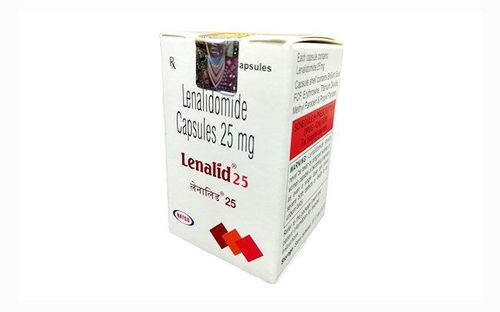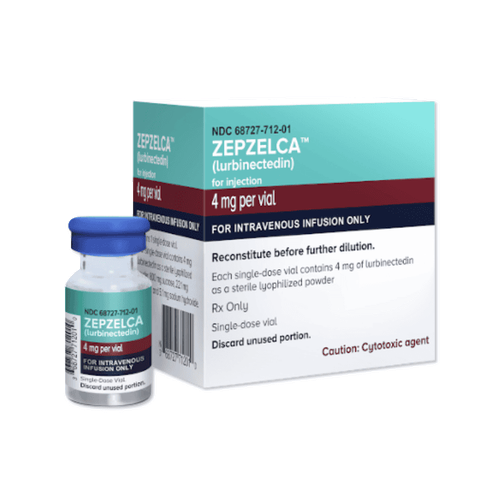This is an automatically translated article.
Cytarabine has active ingredient is Cytarabine (Cytarabin), belongs to the group of anti-cancer, anti-metabolism and cytotoxic drugs. The drug is prepared in the form of solution for injection, lyophilized powder for injection or lyophilized Liposom for injection.
1. Uses of the drug Cytarabine
Cytarabine contains the main ingredient Cytarabine. Cytarabine is one of the anti-metabolites that plays an important role in the treatment of acute myeloid leukemia. Cytarabine has anti-cancer effects thanks to a mechanism specific to the S phase of active cell division, inhibiting DNA synthesis with inhibitory or killing effects on cancer cells.Cytarabine drug is prepared in many different strengths, including Cytarabine 1g.
Cytarabine is indicated in the following cases:
Using Cytarabine in combination with some other anti-cancer drugs such as thioguanin and doxorubicin or daunorubicin to treat acute myeloid leukemia in children and adults; Use for other acute leukemias (acute lymphocytic leukemia, acute stage of chronic myeloid leukemia); Cytarabine injection in the spinal canal is used to prevent and treat meningococcal leukemia; High doses of the drug Cytarabine used to treat some special cases of drug-resistant leukemia at usual doses; Cytarabine in liposomes injected into the spinal canal is used to treat lymphoma of the meninges. On the other hand, the drug Cytarabine is not allowed to be prescribed in the following cases:
Patients with hypersensitivity to preparations containing Cytarabine; People with active meningitis.
2. How to use and dose of Cytarabine
2.1 In adults Treatment of acute myeloid leukemia: Induction therapy leads to remission:
Usual monotherapy dose: Infusion at a dose of 6mg/kg/day continuously or 200mg/m2/day for 5 days, treatments should be spaced 2 weeks apart. When combined with other drugs, a continuous infusion of 2 - 6 mg/kg/day (100 - 200 mg/m2/day) or divided into 2 - 3 doses by injection or intravenous infusion can be given for 5-10 days or daily until the disease is in remission. Maintenance dose, usually IM or subcutaneously 1 dose 1 - 1.5 mg/kg spaced 1 - 4 weeks; Monthly intravenous injection or continuous infusion 1 - 6 mg/kg or 70 - 200 mg/m2/day for 2 - 5 days. Treatment of refractory non-Hodgkin's lymphoma: 2 - 3g/m2 by intravenous infusion over 1-3 hours, every 12 hours, for 2-6 days (4-12 doses).
Treatment of meningococcal leukemia and meningococcal cancer: Intrathecal injection with the usual form of Cytarabine, the common dose is 30mg/m2/time, 4 days apart.
Treatment of meningeal lymphoma using the drug form of Cytarabine in liposomal injection in the spinal canal:
Slow injection directly into the ventricular cavity or lumbar puncture 1-5 minutes, induction treatment 50mg/time, separated 14 days apart, 2 doses at weeks 1 and 3; Consolidation: 3 doses, 14 days apart (weeks 5, 7 and 9), then 1 more dose at week 13; Maintenance therapy: 4 doses, 28 days apart (weeks 17, 21, 25 and 29). When drug-related neurotoxicity is observed, the dose is reduced to 25 mg. If toxicity persists, discontinue use. Patients should also receive dexamethasone at a dose of 4 mg twice daily (oral or intravenous) at the start of a cycle of Cytarabine in liposomal therapy. After spinal injection, the patient should lie still for about 1 hour. 2.2 In other subjects Treatment of acute myeloid leukemia in children: Induction therapy leads to remission:
Usual monotherapy dose: Infusion at a continuous dose of 6mg/kg/day or 200mg/m2. /day for 5 days, treatment sessions should be spaced 2 weeks apart. When combined with other drugs, a continuous infusion of 2 - 6 mg/kg/day (100 - 200 mg/m2/day) or divided into 2 - 3 doses by injection or intravenous infusion can be given for 5-10 days or daily until the disease is in remission. Maintenance dose, usually IM or subcutaneously 1 dose 1 - 1.5 mg/kg spaced 1 - 4 weeks; Monthly intravenous injection or continuous infusion 1 - 6 mg/kg or 70 - 200 mg/m2/day for 2 - 5 days. Treatment of meningeal lymphoma using the drug Cytarabine in liposomal injection in the spinal canal in patients with liver failure: If there is an increase in transaminases or bilirubin above 2mg/dl, the dose should be reduced to 1/2, then if the toxicity disappears in the liver, the dose may be increased.
Cytarabine, if used in excess, can cause irreversible central nervous system toxicity, even death. In order to manage the overdose and toxicity of Cytarabine, the patient should stop treatment with the drug and then resolve the bone marrow failure with a whole blood transfusion or platelet transfusion and antibiotics. The main treatment is to support and maintain the patient's vital function.
3. Cytarabine side effects
When using Cytarabine, patients may experience some side effects such as:
Common: Fever, anemia, leukopenia, thrombocytopenia, megaloblastic disease, paralysis of 2 lower extremities when injected into the spinal canal, dizziness, neuritis, anxiety, depression, agitation, nausea, vomiting, anorexia, diarrhea, dysphagia, Uncommon: Headache, neuritis, syndrome cerebellar syndrome, coma, somnolence, personality changes, convulsions after high dose intrathecal injection, myalgia, Rare: Renal failure, urinary retention, anaphylactic reactions, allergic edema.
4. Be careful when using Cytarabine
Before and while using Cytarabine, patients should note:
Cytarabine is a drug with high toxicity, narrow therapeutic index, treatment response is often associated with toxicity, so it should be used under supervision. of physicians experienced in the use of anticancer drugs; Cytarabine is a strong myelosuppressant, so it should be used with caution in patients with pre-existing myelosuppression due to the drug; Cytarabine can increase blood uric acid by rapidly destroying cancer cells. Therefore, it is necessary to monitor the blood uric acid level of the patient; Liver and kidney function should be checked periodically during treatment with Cytarabine; When Cytarabine is used in high doses, there is a risk of side effects in the central nervous system in people who have been treated with chemotherapy through the spinal canal or who have received radiation therapy. Therefore, Cytarabine should not be used in excess of 2g/m2/time, infusion 1 - 3 hours, each time 12 hours to 12 times apart; Avoid concurrent treatment of Cytarabine with granulocyte infusion as this may cause severe respiratory depression; Growth factors such as GCSF (granulocyte proliferation-stimulating factor) should not be used before or during anti-cancer chemotherapy because they stimulate cell death in the patient. Proliferation-stimulating factors should be used only after the end of anticancer drugs; When taking the liposomal form of Cytarabine, patients should be informed by their physician in advance of possible side effects such as headache, nausea, vomiting, fever, and early symptoms of neurotoxicity. Concomitant dexamethasone should be used at the start of each cycle of intra-liposomal Cytarabine; Cytarabine is very toxic to the fetus during the first 3 months of pregnancy and should be prescribed strictly after weighing the benefits/risks to the fetus. Women of childbearing age should be warned to avoid pregnancy during the period of taking the drug; Cytarabine is highly toxic, so mothers should not breastfeed while taking this drug; Patients undergoing chemotherapy may have impaired ability to drive and operate machinery.
5. Cytarabine drug interactions
Some drug interactions of Cytarabine include:
When Cytarabine is used concurrently or consecutively with 2 or more myelosuppressive drugs (including irradiation) can cause synergistic effects, causing more severe myelosuppression. Therefore, the dose of Cytarabine should be reduced in this case; There is a case that the simultaneous use of high-dose Cytarabine with cyclophosphamide to prepare for bone marrow transplantation has caused cardiomyopathy leading to death; Administration of Cytarabine 48 hours before or 10 minutes after methotrexate therapy may cause synergistic effects; When Cytarabine is used concurrently with fludarabin, fludarabin will increase the concentration of Cytarabine in cells; Concomitant administration of cytarabine with clozapine should be avoided to avoid the risk of agranulocytosis; Caution should be taken when administering Cytarabine with a vaccine, especially with live vaccines because Cytarabine can impair the body's normal defenses, reducing the patient's antibody response to the vaccine. . When leukemia is in remission, live vaccines should only be given at least 3 months after the last chemotherapy course; Cytarabine interacts with gentamicin; During concomitant treatment with fluorocytosin, Cytarabine inhibits the effect of this drug, reducing the concentration of fluorocytosin in the blood plasma; Cytarabine reduces the gastrointestinal absorption of digoxin; Cytarabine reduces the absorption of phenytoin. When using Cytarabine, patients should absolutely follow the doctor's instructions to ensure the highest therapeutic effect and minimize the risk of dangerous events.
Please dial HOTLINE for more information or register for an appointment HERE. Download MyVinmec app to make appointments faster and to manage your bookings easily.













